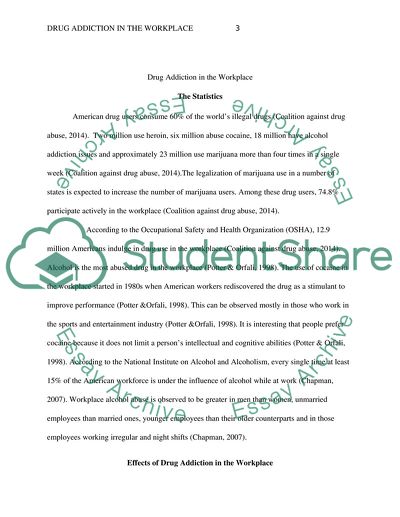Cite this document
(Drug Addiction in the Workplace Research Paper Example | Topics and Well Written Essays - 1500 words, n.d.)
Drug Addiction in the Workplace Research Paper Example | Topics and Well Written Essays - 1500 words. Retrieved from https://studentshare.org/human-resources/1822462-drug-addiction-in-the-work-place
Drug Addiction in the Workplace Research Paper Example | Topics and Well Written Essays - 1500 words. Retrieved from https://studentshare.org/human-resources/1822462-drug-addiction-in-the-work-place
(Drug Addiction in the Workplace Research Paper Example | Topics and Well Written Essays - 1500 Words)
Drug Addiction in the Workplace Research Paper Example | Topics and Well Written Essays - 1500 Words. https://studentshare.org/human-resources/1822462-drug-addiction-in-the-work-place.
Drug Addiction in the Workplace Research Paper Example | Topics and Well Written Essays - 1500 Words. https://studentshare.org/human-resources/1822462-drug-addiction-in-the-work-place.
“Drug Addiction in the Workplace Research Paper Example | Topics and Well Written Essays - 1500 Words”, n.d. https://studentshare.org/human-resources/1822462-drug-addiction-in-the-work-place.


